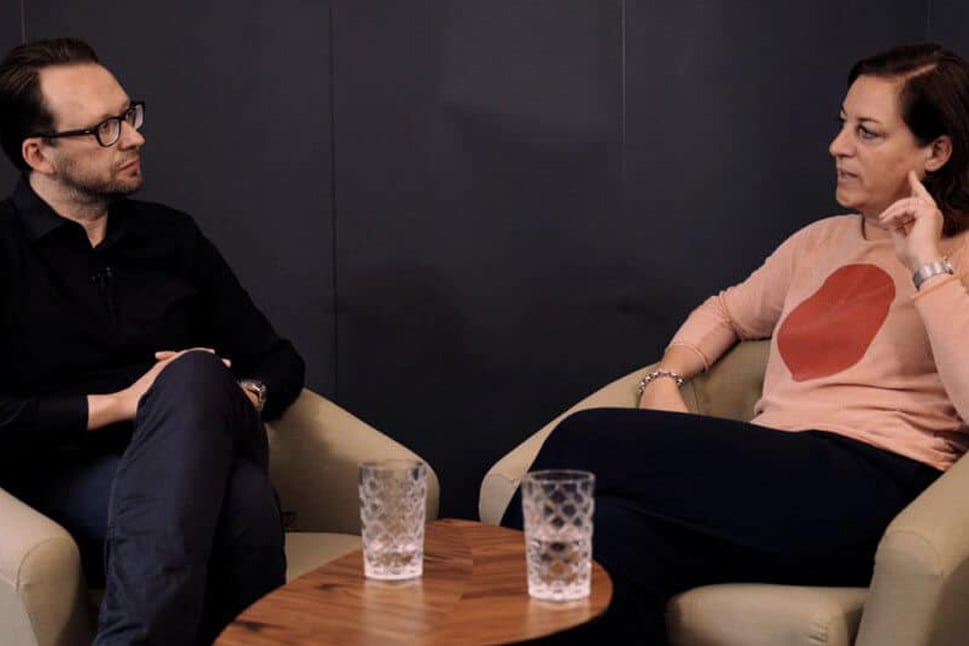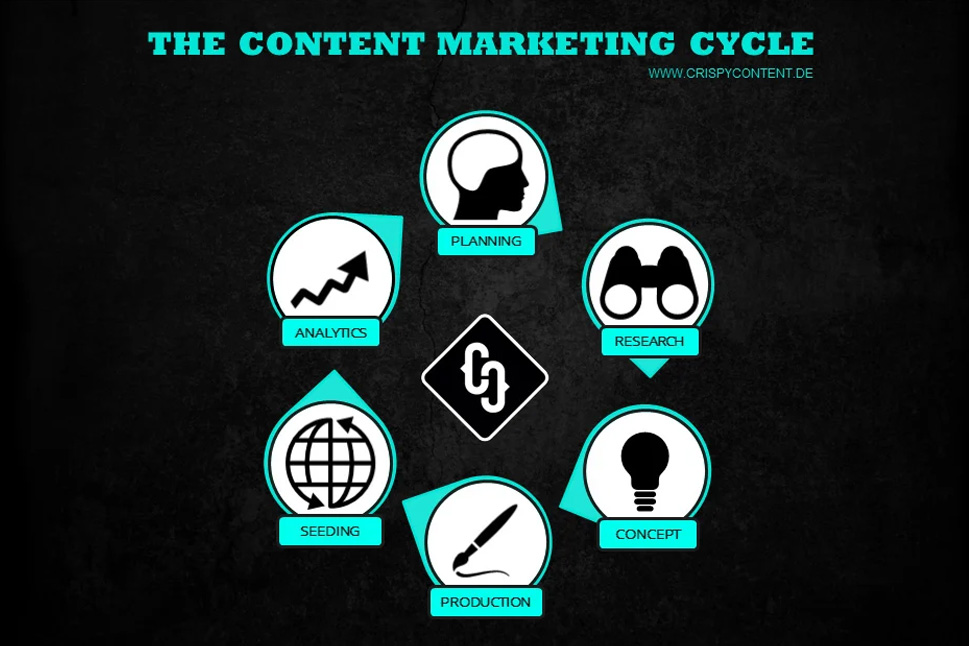The Paid Media Audit - Part 2
Last updated on January 2, 2023 at 12:50 PM.Paid advertising is advertising in the best sense: we pay a third party to present our ads on their advertising space so that their audience becomes ours. Paid advertising is a costly endeavor, as media costs often exceed production costs many times over. That's why a paid media audit is essential. In this second article of our two-part series, we will show you how to audit your paid media in seven steps. Here we go!

Step 1: Define goals
Even if we want to achieve our goals with qualitative measures, such as creative content, they can only be quantified by our measurement tools. In the goal definition, we set the target values for conversions.
Now, conversions don't just happen on a physical level on our website or with our emails, but also on a strategic level in our conversion funnel. Since each distribution channel works with different KPIs, the only unifying element is the "relative" conversion rate. However, conversion rates can be misleading: A figure of 50% conversion rate sounds terrific at first, but if we convert two customers from four prospects who buy a red women's shoe worth 50 euros with a margin of 35%, this 50% is very little. Thus we need absolute data as well as case numbers that are representative.
For example, we define that we want to gain 500 newsletter subscribers (10%) and 50 customers (1%) from 5,000 clicks on an advertising banner for 1 euro per click. Meaning the net cost of acquiring a user was 100 euros. If we generate 101 euros from the customer, then we have an ROI of one percent.
If we get 1,000 newsletter subscribers from 5,000 clicks and double our conversion rate to 20%, and if the conversion rate between subscriber and customer was still one percent, then the customer acquisition costs would only be 50 euros, we would have halved them. In the work process, the conversion rate can be considered in isolation, but not in the strategy process.
However, this example is highly simplified.
Step 2: Analyze conversion path
By analyzing conversion paths, we gain insight into which ads, landing pages or keywords attract the most visitors to our website. Of course, the conversion path could also be continued all the way to the customer, but this conversion in the middle and bottom of funnel is no longer part of the paid media audit. We need this information to optimize our campaigns and improve ROI.
In order for us to make statements about our acquisition channels, we first need to make sure that all of our ads have been tagged with a tracking pixel or UTM codes. Only then is the data collected in our analytics tool, such as Google Analytics, only then can we evaluate it.
Next, we check each individual path. If a company has only one contact form, tracking the user from clicking on the banner ad, visiting the landing page, filling out the form, and transferring the data is relatively easy. However, if we have more than one contact form, for example, various download offers advertised via email that build on each other to guide the user through their customer journey, then it becomes more complicated. The effort is multiplied by the number of personas that need to be converted on our site. If these are not formulated in a separable way, the optimization of the path is hardly possible. Every additional navigation element that could allow the user to exit our path acts like a hole in our tank that we have drilled ourselves.
Step 3: Evaluate content assets
In this step, we analyze the content quality of the ad media and the target page. On the one hand, this is about the pure presence of elements such as a visual, headline, subheadline or description, but also about the information contained in these elements.
It seems logical that in the small and expensive space available, the ads should lead to conversion as quickly as possible. If we manage to make such a value proposition in a few characters, we should make sure that we keep up the pace on our landing page and maintain this value proposition.
In the case of Google Adwords, it gets even more complicated. Here, the search term and ads must be aligned before the page visit. Only their extension leads to our landing page.
Basically, the same applies to all content elements:
- We need to develop an understanding of our target audience, how they communicate and absorb information. This is how we formulate our content.
- Likewise, we need to develop an understanding of how our technical environment handles our information. In search, we need to ensure optimal indexing; in social media advertising, we need to ensure accurate audience demographics; and in programmatic advertising, we need to ensure the right set of conditions are met for an ad to be served.
Step 4: Analyze design, layout and UX.
With this step, we examine the visual aspects of conversion. On the one hand, it's about the handling of our advertising materials and landing pages (UX), on the other hand, it's about the reception (design, visual language and layout).
We should consider textual and graphical elements as an overall construct, they should complement each other. Complex issues that can be presented well in a graphic are often brought to the point much more simply by means of a textual summary. Systematics and correlations can be explained well by graphics. Texts are more suitable for a didactic derivation due to their linear narrative. Within the visual and the textual representation we can go even deeper: we have to ask ourselves whether our text is sufficiently structured, whether we use enough subheadings, whether our formatting structures the reader's thoughts or rather confuses them. On a visual level, we need to check whether our graphics are understandable, whether they are perceived as appealing, whether their use adds value.
The conversion process is an interactive process. With our offer, we provide a framework within which the user should perform actions desired by us. This framework should be self-explanatory so that we achieve the desired result. The more diverse the navigation, the greater the risk of losing the user. The less diverse the navigation, the more certain we need to be that the user will find the selection they want among them. Only a test provides us with certainty.

It's important to make sure technical aspects, such as loading time, are up to standard
Step 5: Analyze technical environment
User conversion takes place in technical environments. While we can assume that the platforms on which we deposit our advertising materials function flawlessly, we must ensure that the target pages to which we link with the advertising materials function just as flawlessly. There, the focus is on loading times, correct functioning and completeness of the loaded elements. Although these three categories seem quite manageable, the variations multiply with the number of browsers and their versions, with languages, devices and other local peculiarities, such as the different legislations in the context of personal data protection. Since this optimization will in all likelihood take more time than is available, we have to prioritize, for example, according to the most widely used browsers or the languages of our focus markets.
Step 6: Evaluate forms
Every conversion process, whether it's downloading an information offer or purchasing a product, requires data transfer between the user and the provider.
Forms tend to be found in the middle and bottom of funnels. In some cases, however, they connect directly to the placement of an ad, such as whitepaper downloads touted via native advertising.
Since data submission here requires more than just a click, the user must be guided through this process. On the one hand, filling out the form must be self-explanatory; on the other hand, the requested data must appear necessary from the user's point of view.
The closer we get to the touchpoint of the final transaction, the more straightforward and direct we should become. However, this presupposes that we have done our homework in terms of building trust, contextualizing our product, and communicating benefits.
Step 7: Evaluate user experience
Basically, these first six steps pursue one goal: we want to use them to improve the user experience of our users. In order not to get lost in details and to keep an overview in the analysis process, the following supporting questions help us:
- Is the content useful?
- Does it solve a problem or serve a need?
- Is the page easy to use?
- Does it load quickly and without errors?
- Is the design appealing?
- Do the visual elements support our brand image?
- Is the information discoverable by the search engine, but also by the user?
- Is the website easy to navigate?
- Is the content accessible to people with disabilities?
- Are the brand values credibly represented?
With the results of the Paid Media Audit, we can again develop content, displays and navigation, test them in implementation, measure the results and further optimize them.
Summary
We've covered the paid media audit in all its facets in our two-part mini-series: Mechanics, tools, procedures and much more. However, this knowledge can only be theretical in nature, because what is appropriate in dealing with any target group also applies: continually, test, iterate and learn. Good luck!
Creative, smart and talkative. Analytical, tech-savvy and hands-on. These are the ingredients for a content marketer at Crispy Content® - whether he or she is a content strategist, content creator, SEO expert, performance marketer or topic expert. Our content marketers are "T-Shaped Marketers". They have a broad range of knowledge paired with in-depth knowledge and skills in a single area.









.png)











.jpg)

-1.jpg)

-1.jpg)
.jpg)



.jpg)













.jpg)







.jpg)

































.jpg)












































